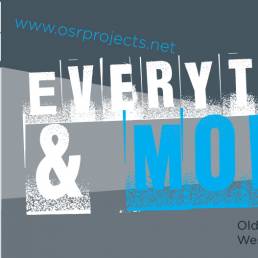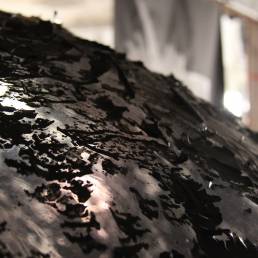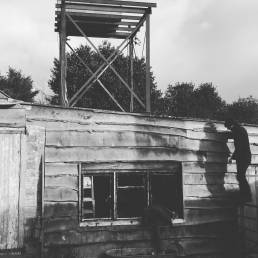Nothing Ever Happens 2012
NOTHING EVER HAPPENS
The Old School Room, West Coker. 15 June 2012 – 8 July 2012.
Michael Day, Ellie Doney & Dafydd Fortt. Curated by Nia Metcalfe.
Nothing Ever Happens looks at landscape and man’s search for meaning in nature; seeking isolation, meditation, solitude and sanctuary in a more natural environment. Being intertwined and part of it all – possibly an attempt to get back to a more natural, primitive or simple existence – ‘Being’ in the world. There is the sense of a journey, a pursuit or discovery, but of something ultimately unknowable and unfathomable.
Bringing together three artists with very different approaches, the works in this show all reference some kind of liminal, elemental state or space. There is a reflective quality that binds the different practices together, physically in the work, and also a reflection of the world around us into the gallery. They maybe hint at our dislocation from the landscape, or from our origin and our attempts to understand, categorise and control it. They share elements of repetition and ritual, order and chaos and mathematical and scientific concerns. Running throughout is an inherent simplistic beauty – the beauty of landscape, natural form and material.
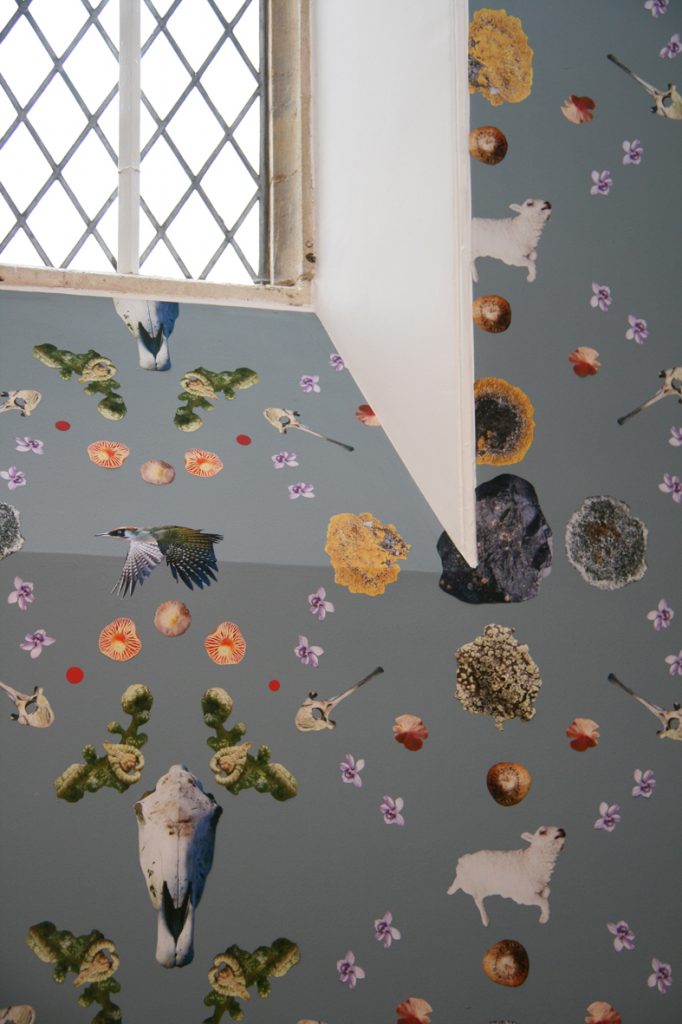
Dafydd Fortt takes long walks, on which he photographs his surroundings – the patterns of the land, the small details of flora and fauna. He brings this back to his studio where he meticulously cuts out and hand collages vast wall-scapes into almost symmetrical kaleidoscopic patterns, seemingly endless or eternal. They reference the shapes and structure that apparently random forms are made of. Not an attempt to document the natural world, but an attempt to reinterpret it into something of the same effect as the walk itself; a pacing, meditative, hypnotic experience. His work can be associated in form and function to that of the Arts and Crafts movement; a rejection of faster production over labours of love and craftsmanship, a tendency towards decorative pattern and an appreciation of the natural world.
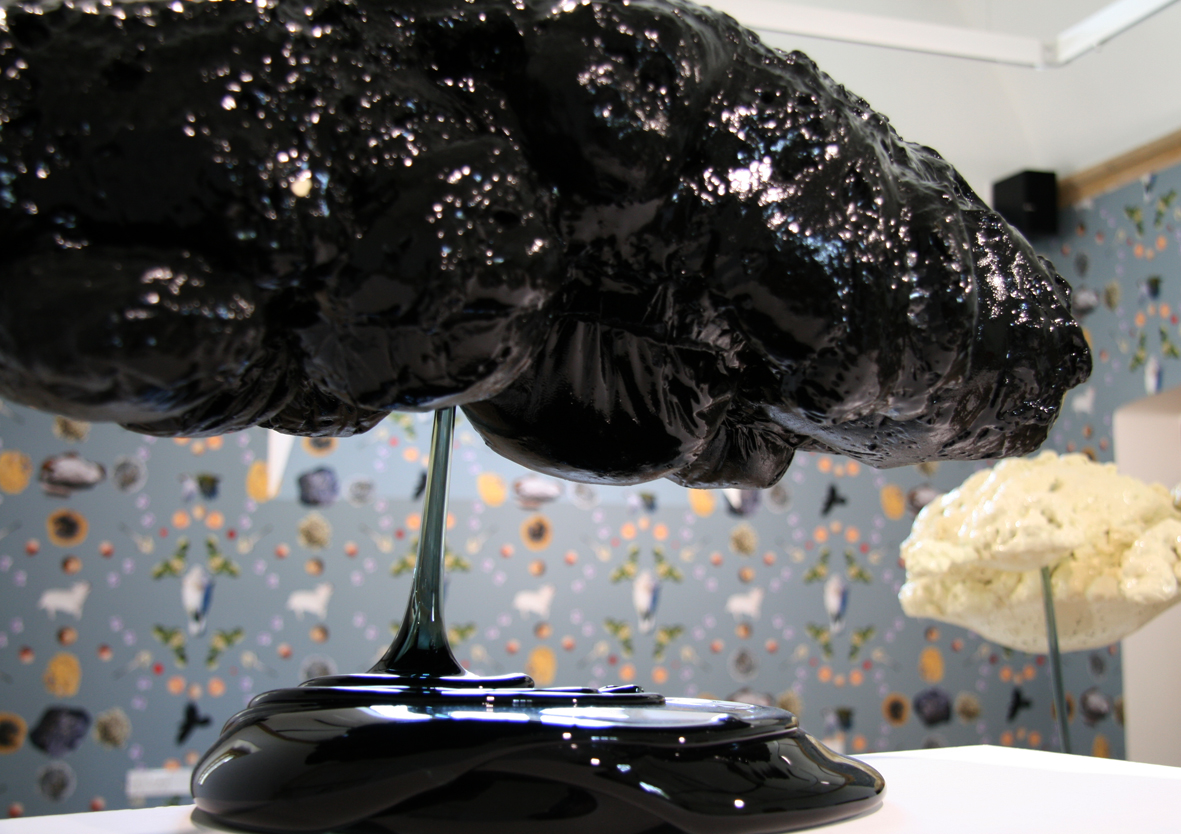
Ellie Doney’s sculptural forms capture a moment between liquid and solid; they are dreamlike, ephemeral interpretations of matter, time and universe. With a slight cartoon aesthetic, they are reminiscent of changing states, transformations, puffs of smoke, or experiments caught mid-action. Doney’s creative process, which is evident in the final chance forms that are produced, adds to this sense of experimentation. They are a mix of illusion and reality, perched between what is and what could be. Their scale puts the viewer into a god-like position, looking down over a tiny tableau, highlighting how small and insignificant we are in relation to the world and universe around us. They aim to materialise nature and our own physicality, consciousness, fears and desires.

Michael Day’s videos are of the world. They transport us outside the gallery and into the environment, to a place we feel we connect with or remember somehow. In ‘S/N’ and ‘NB’, the camera’s vantage point puts the viewer into the scene and adds to this sense of familiarity. It seeks to lull the viewer into a false sense of security with slow, absorbing imagery, but at the point where you may begin to relax into a rhythm some technological or man-made interruption is applied to disrupt the dreaming, bringing you back to reality. Day uses technology to mediate and punctuate his work, often allowing it creative freedom, once programmed, to determine the exact outcome. There is a playfulness that almost accentuates a certain unease, that you are not alone in the scene, and that there is a slightly more ominous human presence.
‘Hard to Tell at this Distance’ again uses nostalgic footage and the juxtaposition of dream and reality in a playful, humorous way. On the one hand drawing the viewer in to the magical awe and wonder of the natural world, with the spectacular scenery and atmospheric soundtrack, on the other maintaining a sense of the ordinary with the everyday chit chat and observations of the unknown filmmaker.
Although Nothing Ever Happens could partly be seen as attempting a divine portrayal of landscape and the power of nature it cannot completely ignore human predisposition to expectation, power, control and failure. It could be argued that modern man has taken nature and contained it within some advertised ideology where we have come to expect too much from its experience, that it will make us feel authentic, or offer some sublime realisation. There is hopefully a slight post-apocalyptic feel, a morbid edge that suggests the cycles of life and death, a potential end and the destruction of fluffy utopian dreaming.
The show’s central theme of a search for meaning and understanding also conjures up notions of religion, or belief, which can be related back to the specific architectural qualities of the Old School Room with its ecclesiastical aesthetic, and galleries in general acting as the secular ‘churches’ of society. In very simple terms it is through art that we seek to understand and make sense of the non-sense, irrational world in which we live. Through art, and nature, we seek to experience something ‘other’, to be taken out of ourselves.
